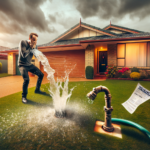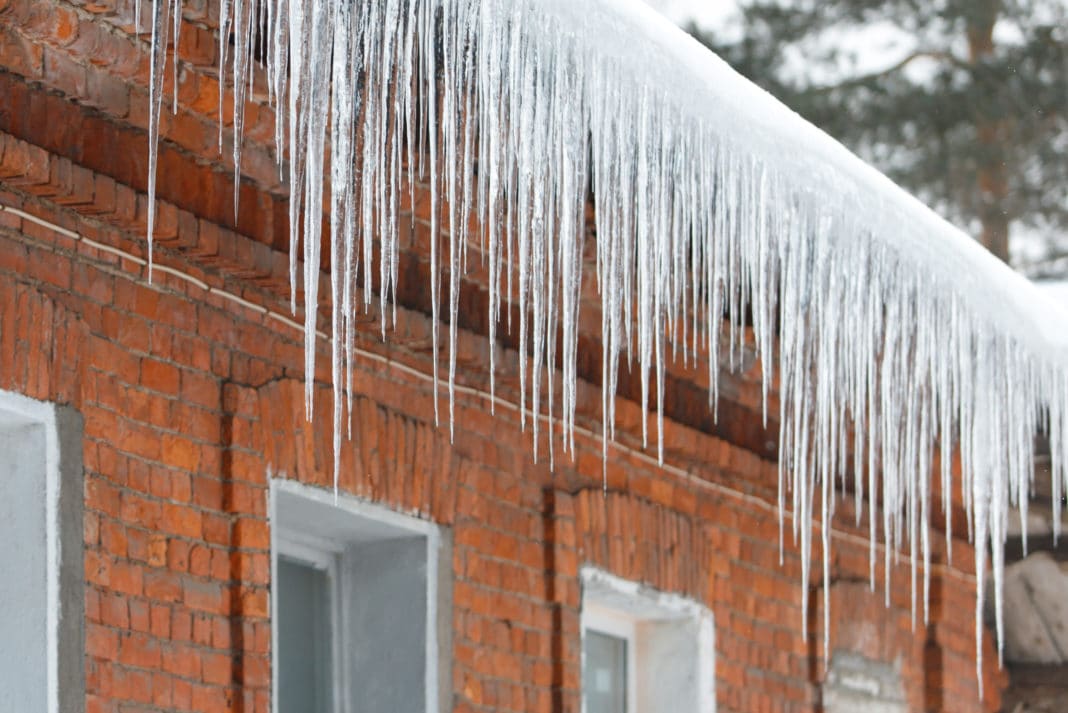Living in an area with heavy snowfall can be a beautiful experience. However, it also comes with its fair share of challenges, one of them being the damage that snow and ice can cause to our roofs. Ice dams are a common problem during winter months, and they can lead to significant damage if not addressed promptly. In this comprehensive guide, we will explore the steps you need to take when filing an insurance claim for ice damaged roofs. From understanding the nature of ice damage to working with contractors and adjusters, we will cover it all. So, let’s dive in and learn how to navigate snow damage and ensure a smooth insurance claims process.
Understanding Ice Damage to Roofs
Before we delve into the insurance claims process, it is crucial to have a clear understanding of ice damage to roofs. Ice dams form when snow on the roof melts and refreezes at the eaves, creating a barrier that prevents proper drainage. This trapped water can seep under the shingles, leading to leaks, water damage, and even structural issues. Identifying the signs of ice damage is essential to initiate the claims process promptly. Look for water stains on your ceilings or walls, sagging gutters, or icicles hanging from the eaves. If you notice any of these signs, it’s time to take action.
The Importance of Filing an Insurance Claim for Ice Damage
Filing an insurance claim for ice damage is crucial to ensure that you receive the necessary financial assistance to repair and restore your roof. Most homeowners’ insurance policies cover ice damage, but it’s essential to review your policy and understand the specific coverage you have. Neglecting to file a claim can result in expensive repairs that you will have to bear out of pocket. Additionally, if left unaddressed, ice damage can lead to more significant issues like mold growth or compromised structural integrity. By filing an insurance claim promptly, you protect yourself from further damage and financial strain.
Steps to Take After Discovering Ice Damage on Your Roof
Discovering ice damage on your roof can be distressing, but it’s important to stay calm and take immediate action. Here are the steps you should follow:
- Assess the damage: Carefully inspect your roof and identify the areas affected by ice damage. Note down any visible signs of leaks, water stains, or structural issues.
- Document the damage: Take photographs or videos of the ice damage, capturing both close-up shots and wider angles to provide a comprehensive view. These visual records will serve as crucial evidence during the claims process.
- Contact your insurance company: Reach out to your insurance company as soon as possible to report the ice damage. Follow their instructions regarding the claims process and provide them with all the necessary information and documentation.
- Temporary repairs: If there are any immediate concerns, such as active leaks, take necessary steps to mitigate further damage. This could include placing buckets to collect water or using tarps to cover exposed areas.
Documenting the Ice Damage for Insurance Purposes
When filing an insurance claim for ice damage, thorough documentation is key to ensuring a smooth process. Here’s what you need to do to document the ice damage effectively:
- Photographs and videos: As mentioned earlier, capturing visual evidence of the ice damage is crucial. Make sure your photographs and videos are clear, well-lit, and showcase the extent of the damage.
- Written descriptions: Alongside the visual evidence, provide written descriptions of the damage. Include details such as the date the damage occurred, the specific areas affected, and any additional observations you may have.
- Keep records of expenses: If you incur any costs related to temporary repairs or mitigation efforts, keep detailed records of these expenses. This includes receipts for materials purchased or invoices from contractors hired for emergency repairs.
By documenting the ice damage thoroughly, you provide your insurance company with the necessary evidence to process your claim efficiently.
Types of Insurance Coverage for Ice Damage to Roofs
Understanding the types of insurance coverage available for ice damage to roofs is essential to ensure you have the right protection in place. Here are the common types of coverage:
- Dwelling coverage: This coverage typically protects the structure of your home, including the roof, against ice damage. It can help pay for repairs or replacement if your roof is damaged due to ice dams.
- Personal property coverage: In addition to the structure, your insurance policy may also cover damage to personal belongings caused by ice dams or water leaks. This coverage can help you replace damaged furniture, electronics, or other items.
- Additional living expenses coverage: If your home becomes uninhabitable due to ice damage, this coverage can provide financial assistance for temporary living arrangements, such as hotel stays or rental properties, until your home is repaired.
- Water damage coverage: Ice dams often lead to water leaks and subsequent water damage. Check your policy to see if it includes coverage for water damage caused by ice dams.
Review your insurance policy carefully to understand the specific coverage you have and any limitations or exclusions that may apply.
How to Prepare for the Insurance Claims Process
To ensure a smooth insurance claims process, it is essential to be prepared. Here are some steps you can take:
- Review your policy: Familiarize yourself with the terms and conditions of your insurance policy, paying particular attention to the section on ice damage. Understand the deductible, coverage limits, and any exclusions that may apply.
- Gather documentation: Collect all relevant documentation, including your insurance policy, photographs/videos of the ice damage, written descriptions, and records of expenses. Having everything organized and readily available will expedite the claims process.
- Contact your insurance agent: If you have any questions or concerns about the claims process, reach out to your insurance agent. They can provide guidance on what to expect and answer any specific questions you may have.
By taking these steps, you will be well-prepared to navigate the insurance claims process smoothly and efficiently.
Tips for Navigating the Insurance Claims Process Successfully
Filing an insurance claim for ice damage can be a complex process, but with the right approach, you can navigate it successfully. Here are some tips to help you along the way:
- Act promptly: As soon as you discover ice damage, contact your insurance company and initiate the claims process. Acting promptly will prevent further damage and ensure a timely resolution.
- Be thorough: Provide your insurance company with all the necessary documentation, including clear photographs/videos, written descriptions, and records of expenses. The more thorough your evidence, the smoother the claims process will be.
- Keep detailed records: Throughout the claims process, keep a record of all communication with your insurance company. Note down names, dates, and summaries of each conversation or email exchange. This will help you track progress and address any potential issues.
- Follow up: If you haven’t heard from your insurance company within a reasonable timeframe, don’t hesitate to follow up. Politely inquire about the status of your claim and ask for an estimated timeline for resolution.
- Consider hiring Community Public Adjusters: If you find the claims process overwhelming or if you encounter difficulties, you may want to consider hiring Community Public Adjusters. These professionals can advocate for you and help ensure you receive a fair settlement.
By following these tips, you increase your chances of navigating the insurance claims process successfully and receiving the compensation you deserve.
Common Mistakes to Avoid When Filing an Insurance Claim for Ice Damage
When filing an insurance claim for ice damage, it’s important to avoid common mistakes that can hinder the process. Here are some pitfalls to watch out for:
- Delaying the claims process: Don’t procrastinate when it comes to filing your claim. The longer you wait, the more extensive the damage can become, and the more challenging it may be to receive a fair settlement.
- Incomplete documentation: Ensure that you provide your insurance company with all the necessary documentation, including clear photographs/videos, written descriptions, and records of expenses. Incomplete or insufficient evidence can lead to delays or denial of your claim.
- Assuming all damage is covered: While most homeowners’ insurance policies cover ice damage, it’s essential to review your policy and understand the specific coverage you have. Don’t assume that all types of damage will be covered automatically.
- Settling for less: Don’t accept a settlement offer without carefully reviewing it and considering all your options. If you believe the offered amount is insufficient, negotiate with your insurance company or seek professional advice from Community Public Adjusters.
By avoiding these common mistakes, you can ensure a smoother claims process and increase your chances of receiving a fair settlement for your ice damaged roof.
Working with Contractors and Adjusters During the Claim Process
During the insurance claims process, you may need to work with contractors and adjusters to assess the damage and complete necessary repairs. Here are some tips for a smooth collaboration:
- Choose reputable contractors: When hiring contractors for repairs, research and select reputable professionals with experience in dealing with ice damage. Request multiple quotes and compare them before making a decision.
- Communicate with adjusters: Be responsive and cooperative when communicating with insurance adjusters. Provide them with any additional information they request promptly, and be available for inspections or meetings as needed.
- Document repairs: Keep detailed records of all repairs undertaken, including invoices, receipts, and photographs/videos. These records will be valuable to demonstrate the scope of the repairs and the associated costs.
By maintaining open communication and thorough documentation, you can ensure a successful collaboration with contractors and adjusters, leading to the prompt resolution of your claim.
Conclusion: Taking Proactive Steps to Prevent Ice Damage in the Future
While filing an insurance claim for ice damaged roofs is essential, it’s equally important to take proactive steps to prevent future damage. Here are some preventive measures you can implement:
- Improve insulation: Adequate insulation in your attic can help prevent heat from escaping and reduce the likelihood of ice dams forming.
- Ventilate your roof: Ensure proper ventilation in your attic to maintain a consistent temperature on your roof and prevent snow from melting and refreezing.
- Clear snow from your roof: After heavy snowfall, use a roof rake to carefully remove excess snow from your roof, reducing the risk of ice dams forming.
- Seal air leaks: Identify and seal any air leaks in your attic or around windows and doors. This will prevent warm air from escaping and contributing to the formation of ice dams.
By implementing these preventive measures, you can minimize the risk of future ice damage and protect your home from costly repairs.
In conclusion, navigating snow damage and filing insurance claims for ice damaged roofs requires knowledge, preparation, and attention to detail. By understanding ice damage, documenting the damage effectively, reviewing your insurance coverage, and following the tips provided, you can navigate the claims process successfully. Remember to work closely with contractors and adjusters, and take proactive steps to prevent ice damage in the future. With these strategies in place, you can protect your home and ensure a smooth journey through the insurance claims process.
CTA: If you have experienced ice damage to your roof, don’t delay! Contact your insurance company today and initiate the claims process. By acting promptly, you can prevent further damage and ensure a timely resolution.
We represent home and business owners and have vast experience with the following types of claims:
- Fire and smoke damage claims
- Water damage claims
- Flood damage claims
- Theft and vandalism damage claims
- Snow and ice damage claims
- Building collapse claims
- Wind and hail damage claims
- Catastrophic damage claims
- Roof leaks
- Blown off shingles & siding
- All plumbing leaks
- Toilet overflow
- Burst Pipes
- Frozen Pipes





